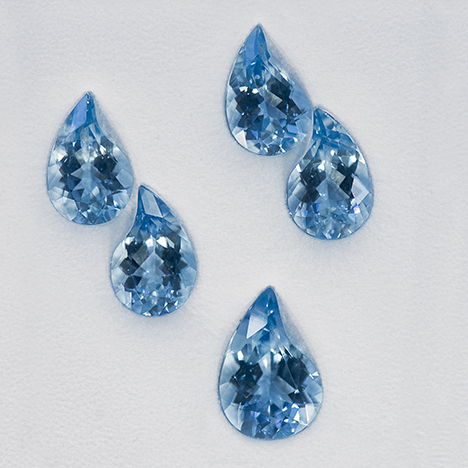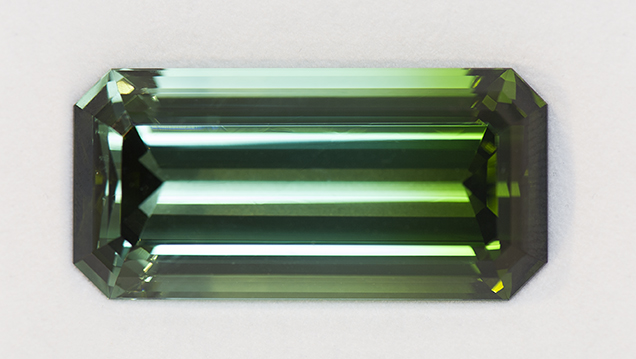Multi-Generation Cutting Family from Idar-Oberstein

Idar-Oberstein, Germany is a historic agate locality that became famous over the last century as a colored stone trading and cutting center. In recent decades, though, much of the lapidary activity has moved from Idar-Oberstein to cutting centers in Asia such as Jaipur and Bangkok. The remaining businesses in Idar are focusing on highly specialized market segments, such as precision cutting and unusual stone varieties. Alexander Arnoldi explained to us the strategy of Arnoldi International and provided an update on some new high-quality materials.
The cutting business was founded in 1919, making Alexander Arnoldi a fourth-generation gemstone dealer and cutter. They process all the goods in-house, from rough sorting to final polishing. Lapidary work is still based on the traditional techniques of Idar-Oberstein, where the wheel is turned with the dominant right hand, leaving the left hand free to hold the stone. Laps are motor-driven today, but the stone is still held with the left hand. According to Arnoldi, it takes more than five years to master cutting and learn all the facet placements and correct angles for the different styles and materials.
Fourth-generation gem cutter Alexander Arnoldi discusses his family’s business, based in Idar-Oberstein, Germany.
The company focuses on flawless stones, a challenging segment of the gemstone industry. Prices for these goods have exploded, but supply is extremely low and competition at the source is very high. Finding extremely high-quality rough that yields large clean stones is one of the main challenges they face in the current market. Nowadays, most rough suppliers bring their goods to Bangkok and Jaipur instead of Germany. This forces companies such as Arnoldi to go source their own material on site—for instance, copper-bearing tourmaline from Mozambique.
Idar-Oberstein’s first main product more than 500 years ago was agate, polished using hard sandstones found nearby. When Germany’s population began moving abroad in the early nineteenth century, Idar’s network became more global and gained access to the Brazilian deposits, which produced many quartz varieties. The German cutters became very adept at cutting and polishing the materials sourced in Brazil. Arnoldi focused on aquamarine (figure 1), a stone that remains their strong suit in 2018. Originally they worked with goods from South America, including the fabled Santa Maria deposit in Minas Gerais, Brazil. Much of the rough is now sourced in Central and East Africa, which produces deep blue material similar to Santa Maria aquamarine.

Another stone they are focusing on is tourmaline, including Paraíba, rubellite, and bicolor stones. In December 2017, they traveled to Central Africa to source the new tourmalines from the Democratic Republic of Congo (figure 2). This material comes in different shades of green, often in the same crystal. Pink crystals are occasionally found. Supply is highly irregular, and quality varies greatly.
Arnoldi International is putting their focus on high-quality, flawless goods and excellent cutting standards. This allows them to supply high-end vendors who often ask for unique, customized cutting styles.



